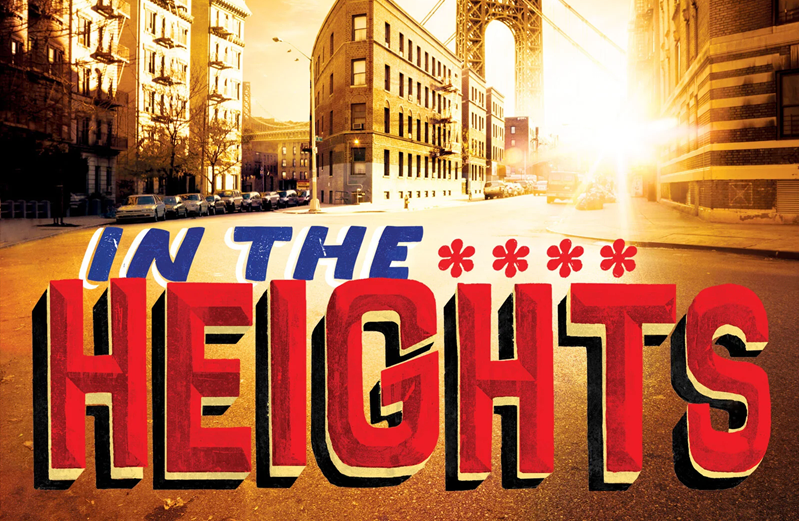Dear Schools, You Can’t Whitewash “In the Heights”
by Chris Peterson
Content note: This article uses the term Latinx as a gender-inclusive term for people of Latin American descent. While not universally adopted, it is used here in alignment with the inclusive spirit of the original musical and the communities it represents.
When In the Heights debuted on Broadway in 2008, it did more than introduce a fresh sound to musical theatre. It placed an entire community—Washington Heights—center stage, celebrating the stories, rhythms, and resilience of its Latinx residents. Lin-Manuel Miranda’s musical was a love letter to culture, family, language, and place. It broke barriers by telling the truth.
Recently, I received an email from a concerned parent. Their child attends a predominantly white high school that is planning to perform In the Heights later this year. The parent’s discomfort was clear. And justified. Given the low number of students from the Latinx community, especially in the school’s theatre department, it’s more than likely some roles would be portrayed by white students.
Let’s get this out of the way and make it clear. This is not just an artistic misstep. It’s a violation of the show’s intent and the licensing agreement that comes with it.
In the Heights is licensed through Concord Theatricals, and the materials are explicit: roles must be cast authentically.
It states on their website: “In the Heights celebrates, uplifts and amplifies a Latinx community in New York City. To honor the authors’ vision and to clearly and appropriately tell that story, the roles should be cast accordingly. Company members must match the character definitions as written in the script.”
Characters like Usnavi, Nina, Vanessa, Benny, and Abuela Claudia are not racially neutral. They are Dominican, Puerto Rican, Cuban, Black. They carry with them the generational weight of migration, survival, community, and pride. These identities are not suggestions. They are the story.
Choosing to overlook that is not only disrespectful, it is a breach of the licensing terms. And yet, this issue continues to surface in high school productions across the country, often framed as a “teachable moment” or an opportunity for students to “stretch.” And it’s reasonable to think that because as of a decade ago, the creators felt the same way.
In 2013, Miranda stated that he supported casting white students in In The Heights during an interview with THNKR. He says in the video below, “I believe when you’re in high school, you should be able to play whatever role you want.” (Note: This was before Hamilton, which has been a center of the discussion for color-conscious casting.)
He reiterated this point later on in an interview with ETA,
"The joy of In the Heights runs both ways to me. When I see a school production with not a lot of Latino students doing it, I know they’re learning things about Latino culture that go beyond what they’re fed in the media every day. They HAVE to learn those things to play their parts correctly. And when I see a school with a huge Latino population do Heights, I feel a surge of pride that the students get to perform something that may have a sliver of resonance in their daily lives."
Co-writer Quiara Alegría Hudes also agrees. During an interview with American Theatre Magazine, she said this,
"I’m happy for schools and communities who do not have these actors on hand to use In the Heights as an educational experience for participants of all stripes."
It needs to be mentioned that the quotes and video above were all made a decade or longer ago. Given the addition of casting requirement language in the licensing, we can reasonably assume that both Miranda and Alegría Hudes seem to no longer think this way, as such language would never be added to the licensing without their approval.
And thank the Lord for that, because without this language, the lesson being spread is representation is optional. That culture is flexible. That stories created by and for communities of color can be rewritten when it’s more convenient for a white cast.
If your school cannot cast In the Heights appropriately, then it should not be producing the show. That is not exclusion. It is responsibility. Theatrical storytelling is not just about music and movement. It is about truth. When that truth is stripped away, the work becomes hollow.
Some educators argue that there are not enough Latinx students to cast the show. That’s not a reason to change the casting. It’s a sign to ask deeper questions about access and equity. It’s a moment to examine who is welcomed into the theatre program and why. It might also be a moment to choose a different show.
Even Miranda himself has acknowledged the weight of representation. After the release of the film adaptation, he issued a public apology for the lack of Afro-Latinx visibility in a story that is meant to reflect the full richness of that community. If the creator of the show is willing to own that shortcoming, then surely high school theatre departments can take a pause and reflect.
This is not about gatekeeping. It is about stewardship. We would not perform Fiddler on the Roof without any Jewish actors and claim the story still holds. We would not stage The Color Purple with a white cast and say the message still comes through. The same standards must apply here.
Theatre at the high school level should model empathy, respect, and integrity. When we license culturally specific stories, we carry a responsibility to tell them authentically. And when we get it wrong, it is not just a missed opportunity. It is a message—loud and clear—that some stories are only valued when stripped of their culture. In the Heights deserves better. So do our students.
